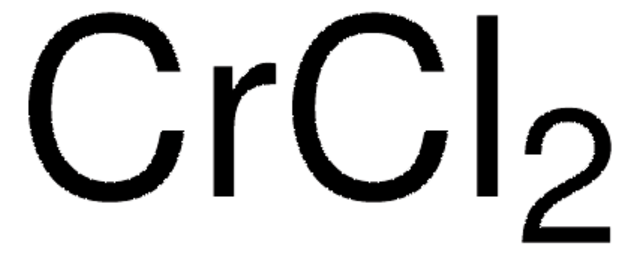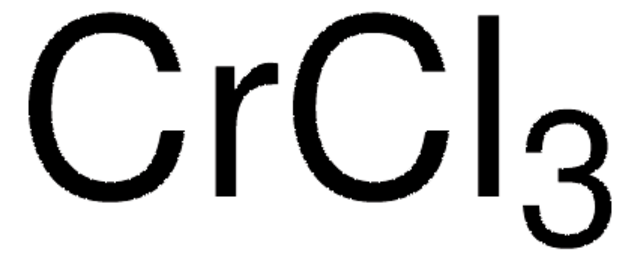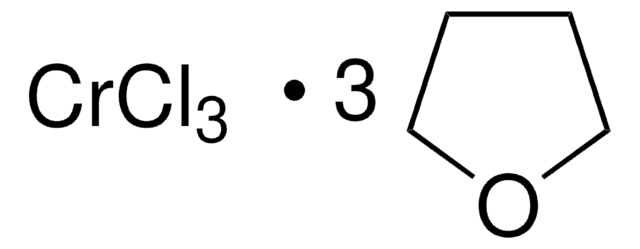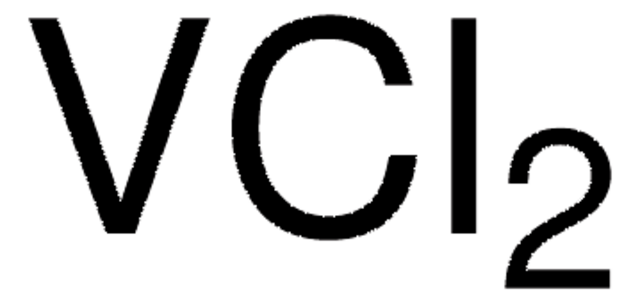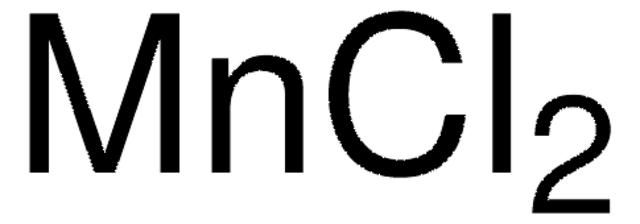762873
Chromium(II) chloride
AnhydroBeads™, −10 mesh, 99.99% trace metals basis
Synonym(s):
Chromium dichloride, Chromous chloride
About This Item
synthesis grade
Recommended Products
grade
for synthesis
synthesis grade
Quality Level
product line
AnhydroBeads™
Assay
99.99% trace metals basis
form
beads
impurities
≤150.0 ppm Trace Metal Analysis
particle size
−10 mesh
mp
824 °C (lit.)
density
2.9 g/mL at 25 °C (lit.)
SMILES string
Cl[Cr]Cl
InChI
1S/2ClH.Cr/h2*1H;/q;;+2/p-2
InChI key
XBWRJSSJWDOUSJ-UHFFFAOYSA-L
Looking for similar products? Visit Product Comparison Guide
Related Categories
Application
Anhydrous chromium chloride finds applications as catalysts, chromizing ferrous metals, steel, etc. The vapor-phase co-reductions with other metal halides by hydrogen results in finely divided intermetallics with applications as structural materials or compounds with useful thermoelectric, magnetic, and oxidation-resistance properties.
Chromium chloride powder is air and water sensitive. Beads have lower surface area and pour easily.
Legal Information
Signal Word
Warning
Hazard Statements
Precautionary Statements
Hazard Classifications
Acute Tox. 4 Oral
Storage Class Code
11 - Combustible Solids
WGK
WGK 3
Flash Point(F)
Not applicable
Flash Point(C)
Not applicable
Choose from one of the most recent versions:
Certificates of Analysis (COA)
Don't see the Right Version?
If you require a particular version, you can look up a specific certificate by the Lot or Batch number.
Already Own This Product?
Find documentation for the products that you have recently purchased in the Document Library.
Customers Also Viewed
Our team of scientists has experience in all areas of research including Life Science, Material Science, Chemical Synthesis, Chromatography, Analytical and many others.
Contact Technical Service